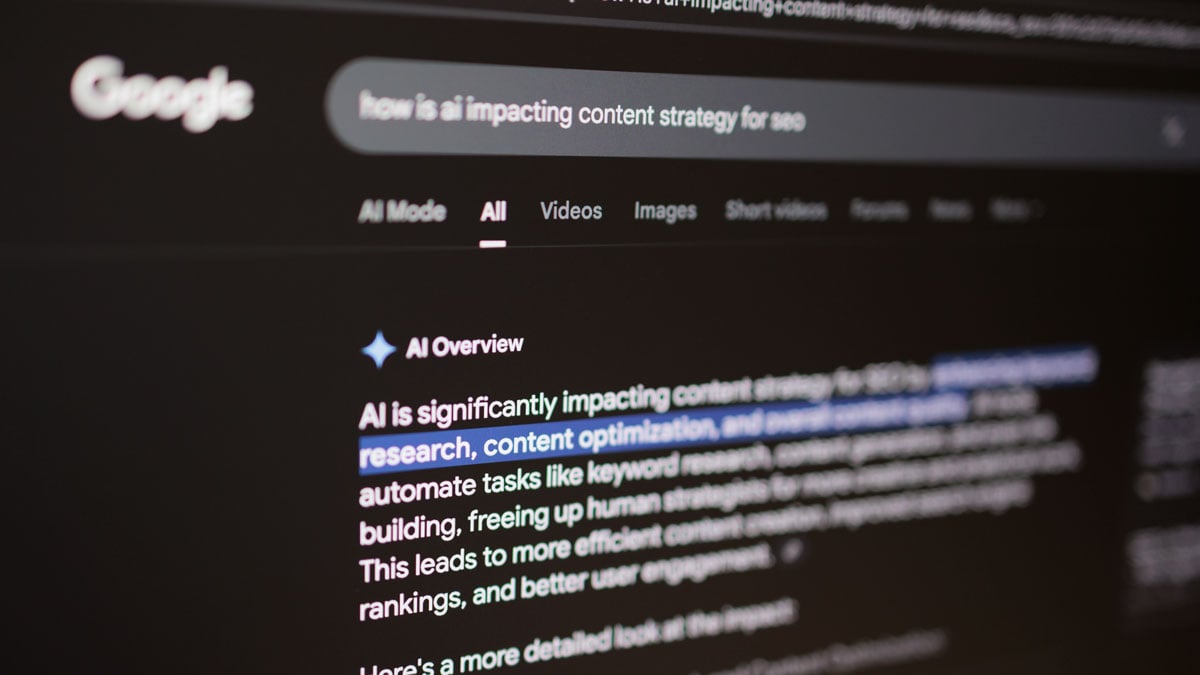Quick Guide on Image File Types
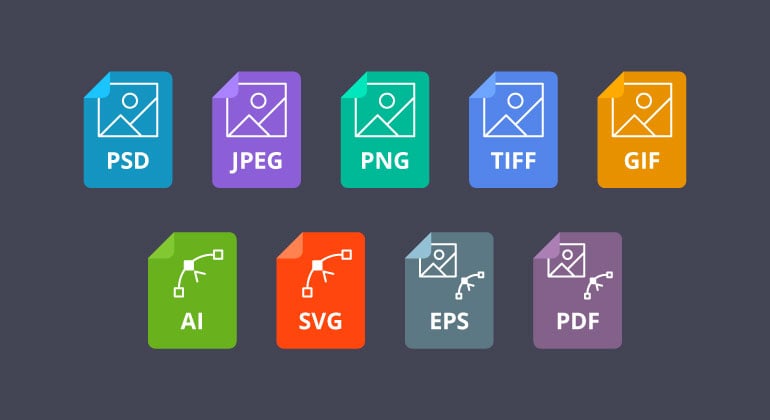
January 23, 2025
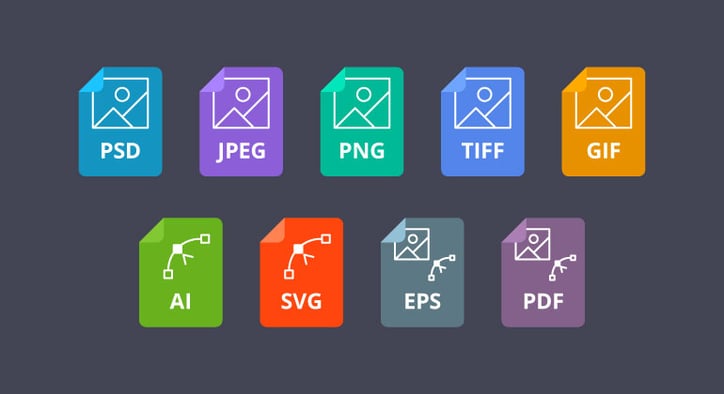
Sometimes it feels like alphabet soup when talking about digital marketing file types. There are JPEGs, GIFs along with EPS and AI—just to name a few. What does it all mean? And how should these different file types be used in digital marketing? Unless you specialize in creating or releasing files, chances are a basic overview of file types will benefit your understanding of how to ask for and receive the right file type. Here’s a quick guide on what various image file types mean and how they are used and shared daily.
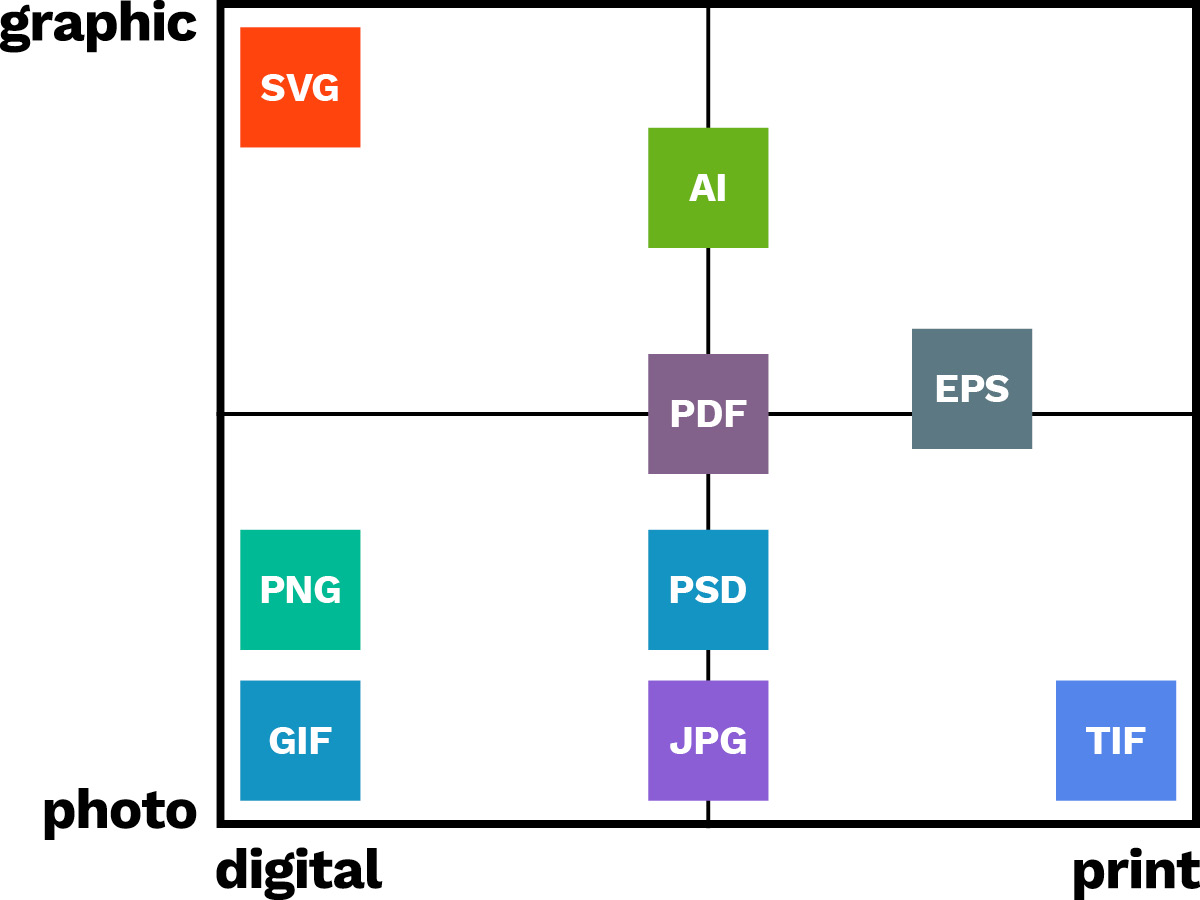
The above graph gives a general comparison between image file types, showing which are most suitable for full-color photographs, logos and other graphics, web and digital device usage, and high-resolution printing.
Raster vs. Vector Graphics
A raster graphic is the most common form of online image and photographic graphic. It is made of pixels, or dots, within a rectangular format. The resolution of a raster graphic is measured by dpi (dots per inch). The higher the dpi, the more photographic detail. The most popular file type formats to save raster graphics include JPEG, PNG, GIF, TIFF, and PDF.
A vector graphic is rendered with mathematics for each shape, rather than pixels (e.g. a CAD drawing). As a result, vector graphics are most commonly used for logos and fonts because they can be scaled to any size without loss of quality. Most graphics created in Adobe Illustrator are vector images. The most popular formats that vector graphics can be saved in include AI and EPS.
Read our blog about Image Type, Size and Resolution for a more detailed look.
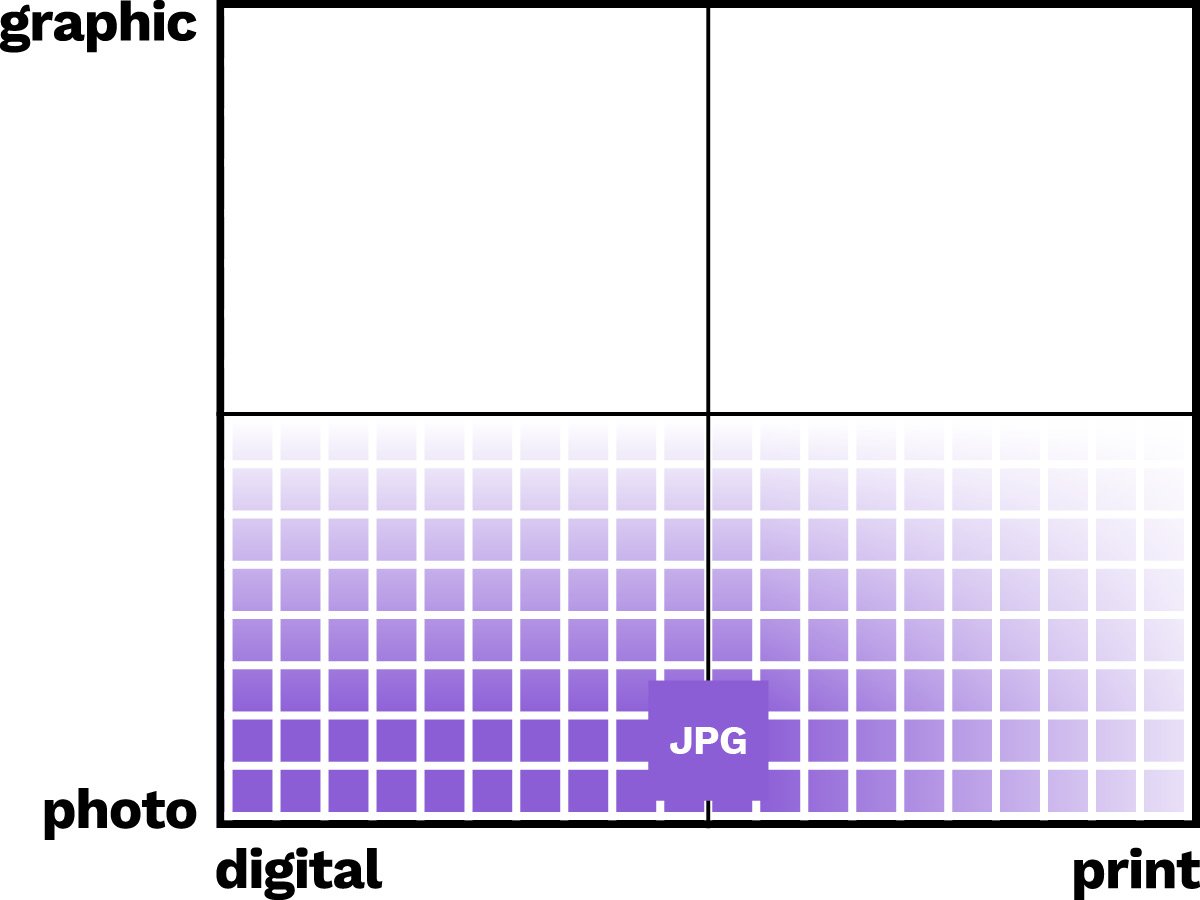
JPEG—Joint Photographic Experts Group
JPEGs are likely the most commonly used file type on the internet. Almost all devices can open and save this file format, which makes it a popular choice. They are great for images that are published online and when you need to keep the file size small. Unfortunately, when the file size decreases, the image quality tends to also “fall apart” making it less ideal for situations that require smooth color transitions or monochromatic graphics or transparent layers.
Best for: general digital photography
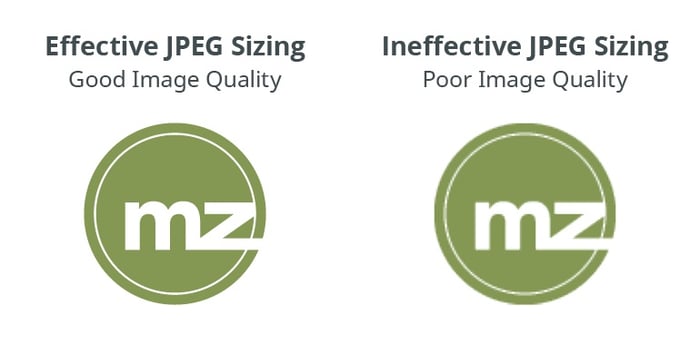
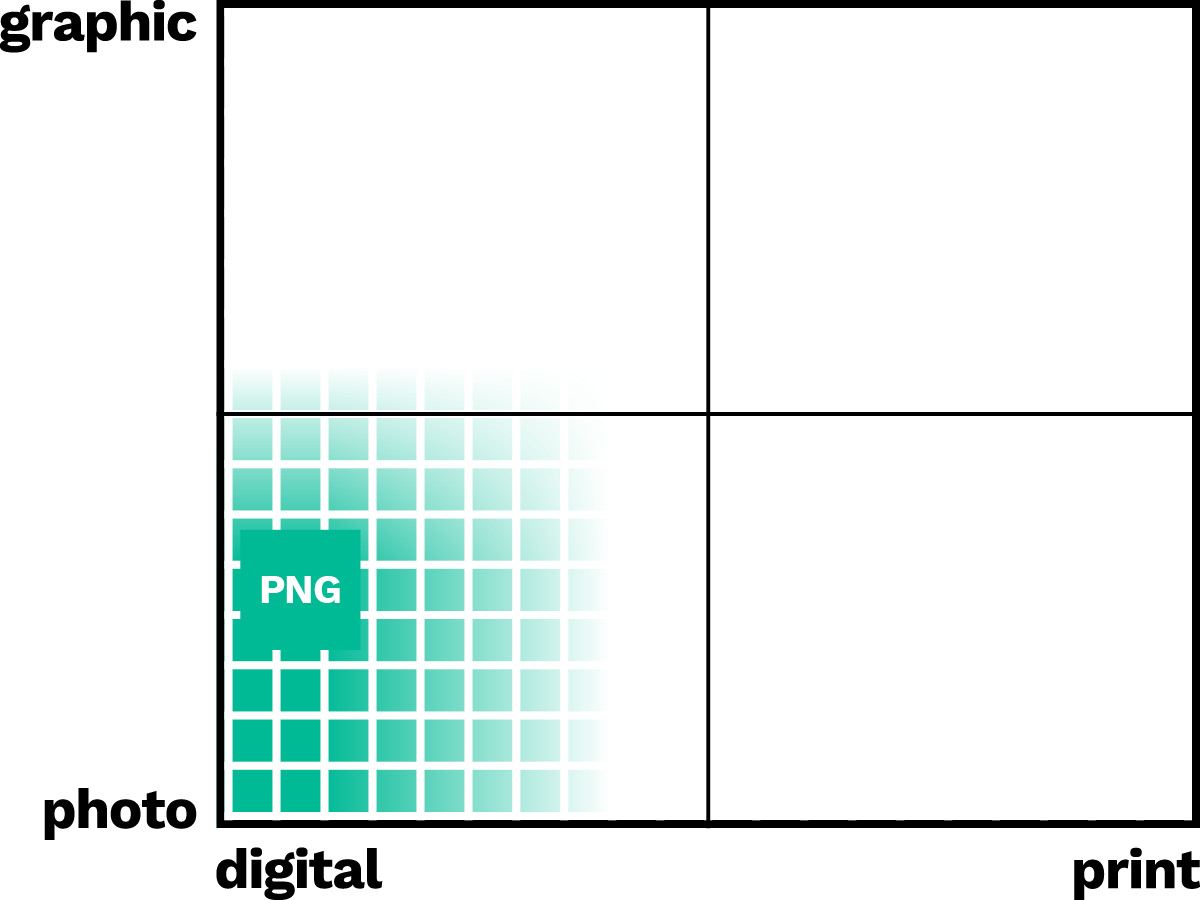
PNG—Portable Networks Graphic
PNGs offer incredible quality for web graphics. The file sizes are small and are able to store millions of colors without losing quality. A unique attribute of a PNG is that it can have a transparent background, so it is effectively used in layered graphics. PNGs are not compatible with all software and are not suitable for print, which can be a major complication when sharing these files.
Best for: web images that require transparency
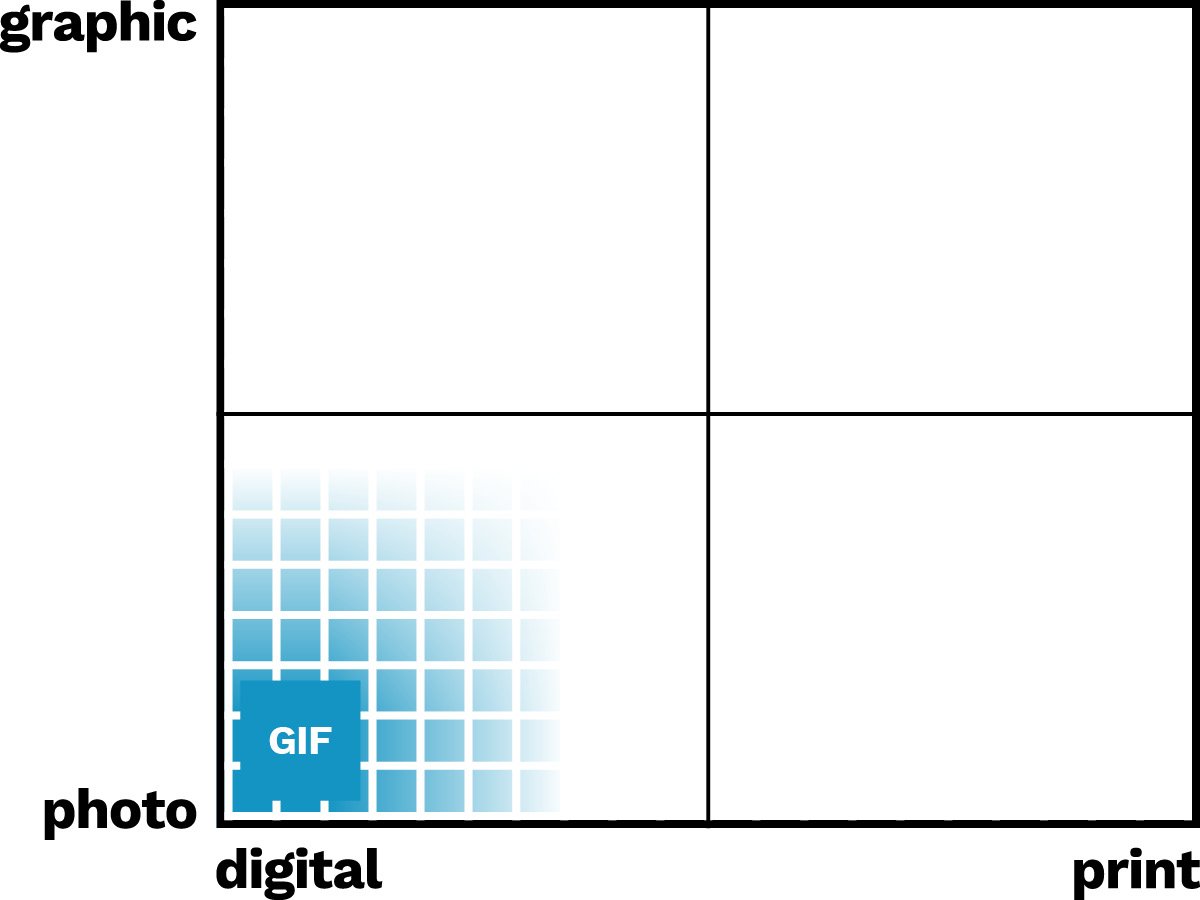
GIF—Graphics Interchange Format
GIFs are known for their animated features. They can be optimized for a very low file size, which is helpful when an image needs to be loaded quickly. It is a great file to use when working with banners, charts and buttons. Since the file size is so low, the image quality isn’t the best. Compared to the millions of colors that a PNG can store, GIFs can only store up to 256 different colors.
Best for: animated images online
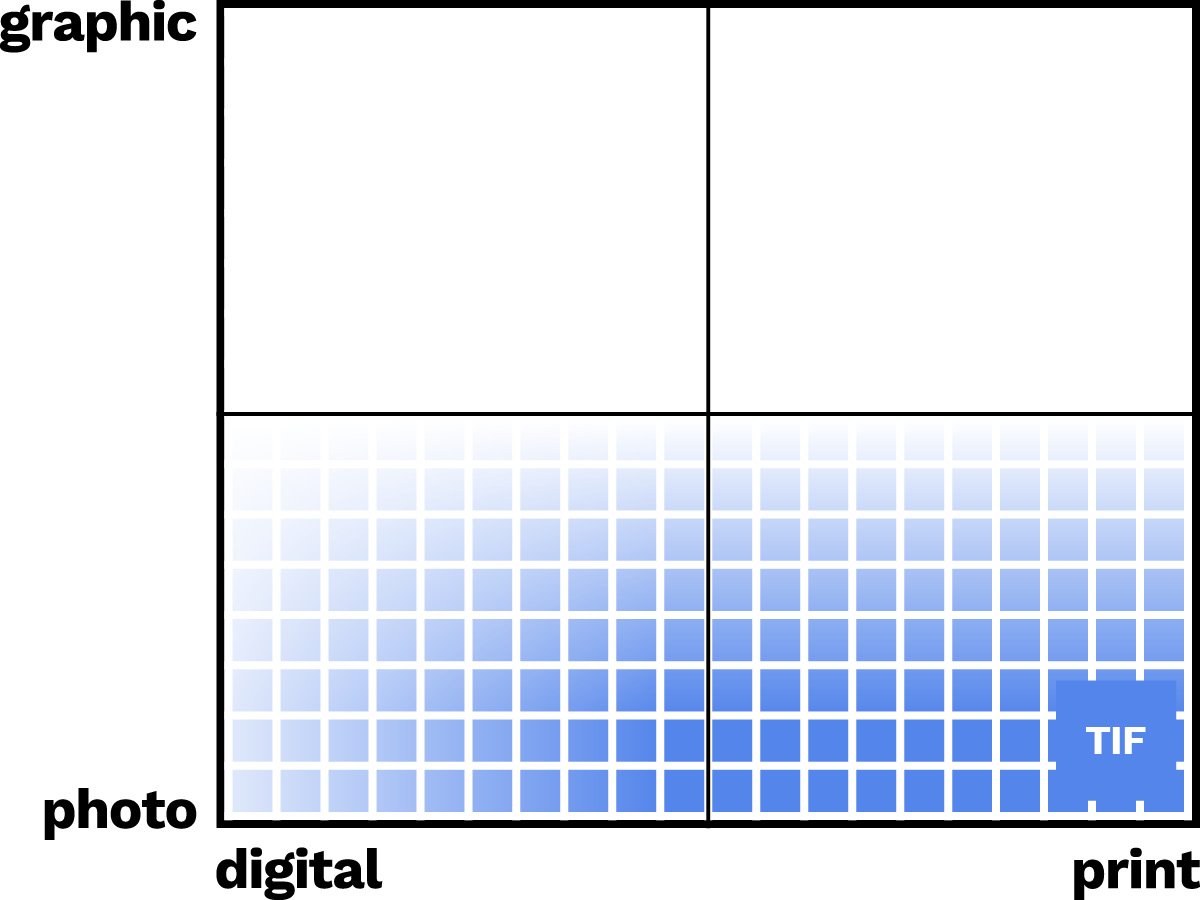
TIFF—Tagged Image File Format
TIFFs are known for their high quality and large file sizes. These files do not lose their quality, which is why it is smart to save photographs for print as a TIFF. Professionals who work with images prefer this file because it can store many pixels and colors. Since file sizes are so large, they are not suitable for use online. Most often TIFF files are used for print or large-format graphics such as trade show booths and other displays.
Best for: final print/archive files for photographs
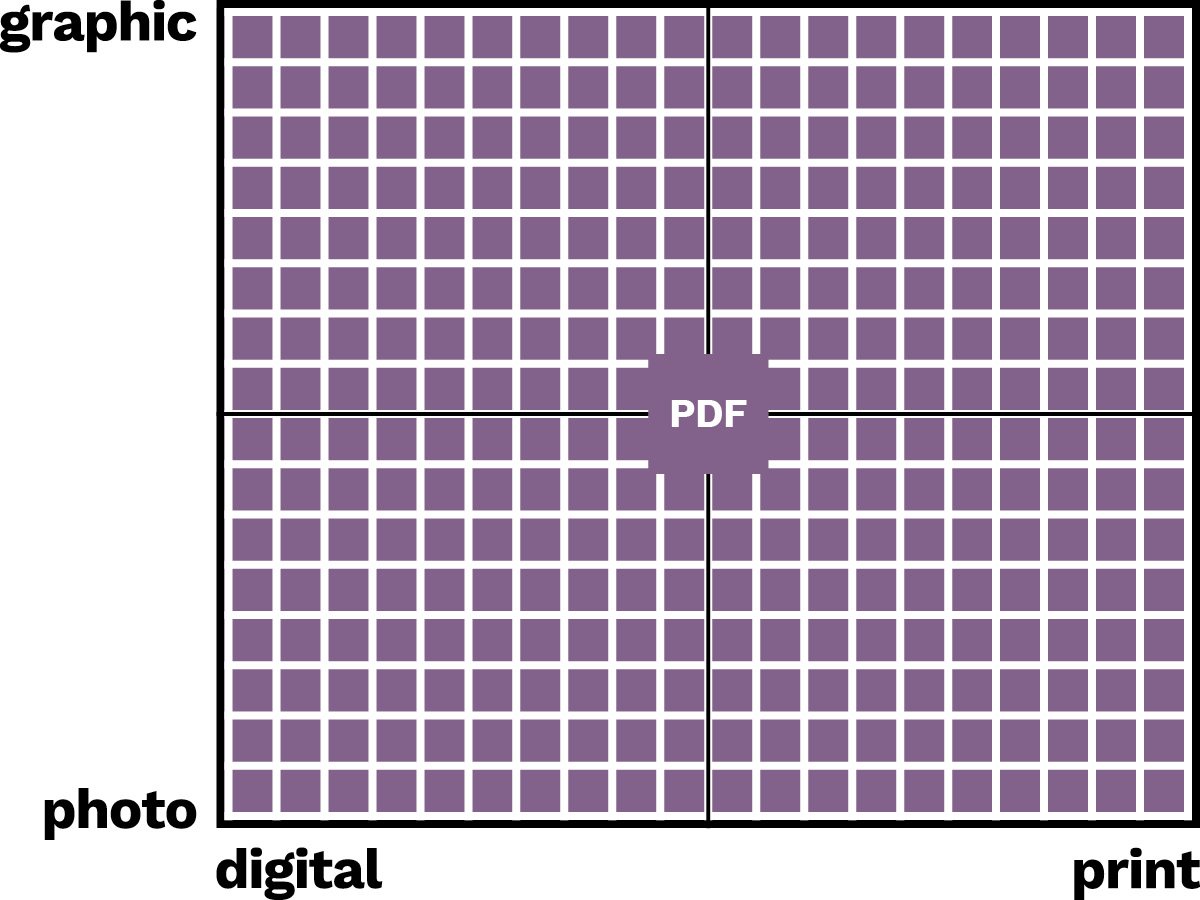
PDF—Portable Document Format
PDFs are compatible with almost every application, and almost any file can be saved as a PDF. This file type will support both vector and raster images in one file. Its primary function is to be shareable with anyone anywhere as long as they have downloaded the free Adobe Acrobat Reader software. PDFs are the best file format for sharing documents and editing efficiently.
Best for: the most versatile format for sharing documents
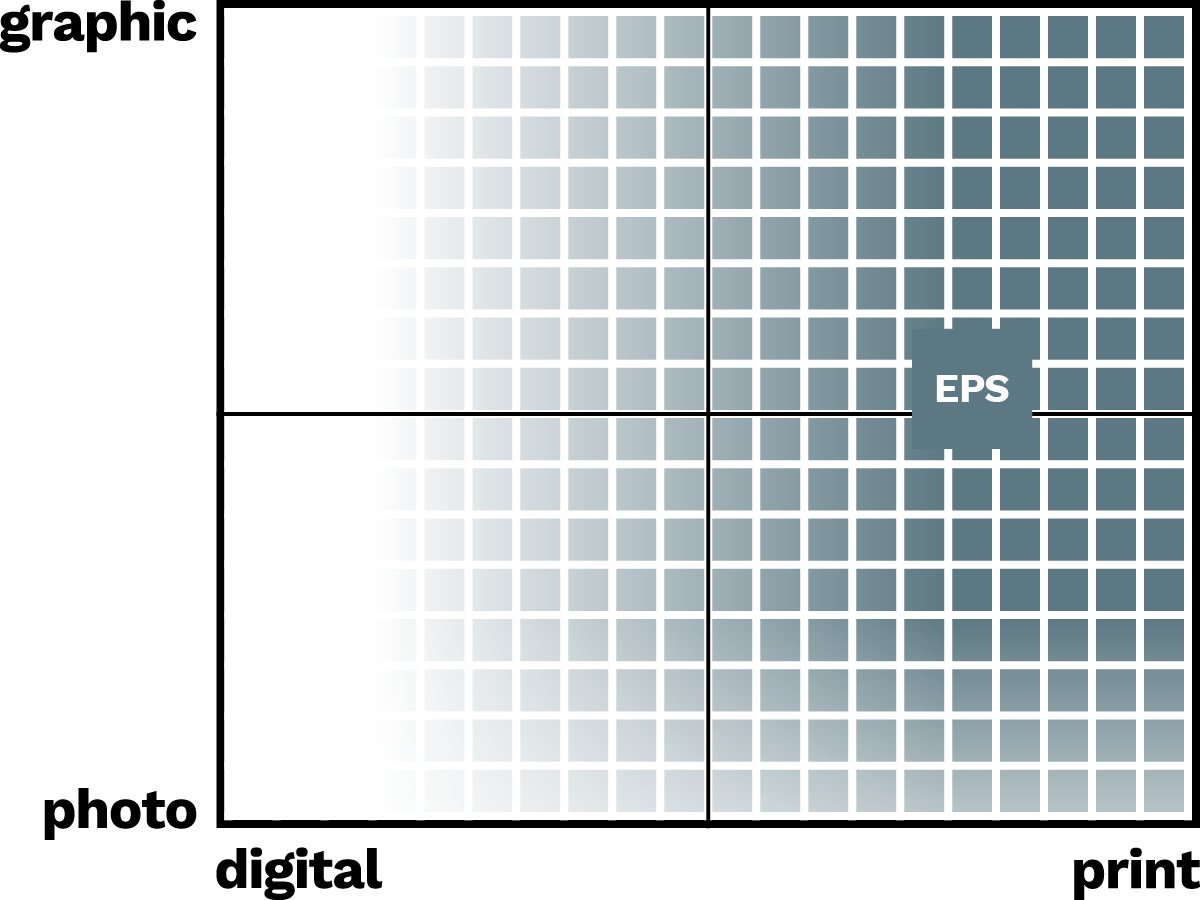
EPS—Encapsulated Postscript
EPS is a file type that will hold raster or vector images and is designed to produce high-resolution graphics. It is similar to PDF because it’s a universal file type; however, EPS is intended for print production rather than viewing and sharing. While EPS does support raster images, TIFF is generally a better choice. Vector EPS files are good to have in addition to AI files because they are compatible with many software applications. In order to open an EPS file, you may need to download graphic software like Adobe Illustrator or Corel Draw.
Best for: compatible vector source files
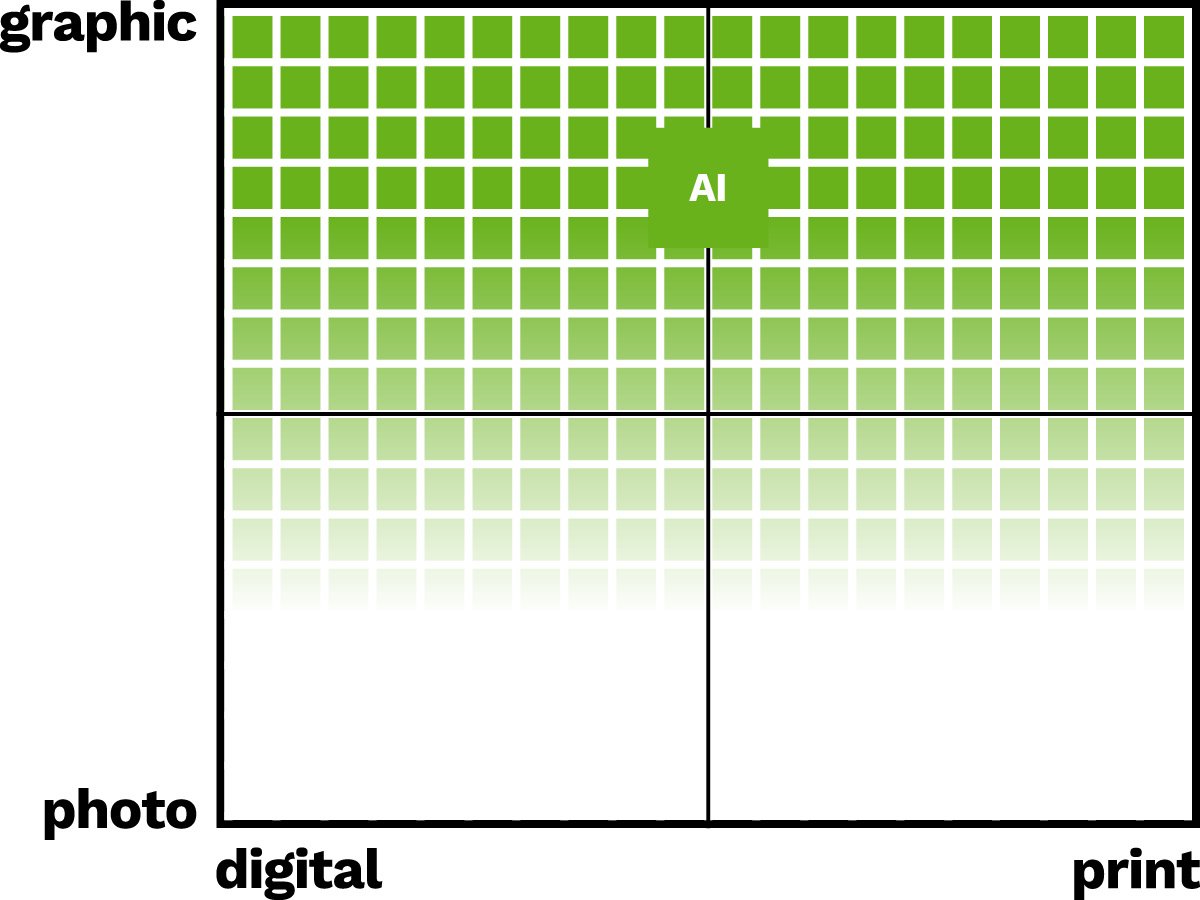
AI—Adobe Illustrator
AI is the most trusted format to create vector graphics for designers. Most logos and vector artwork is created in Adobe Illustrator. It is also possible to contain image file types within AI files, but they are not directly editable. This is a great tool for designers, but in order to open this file type, you must have Adobe Illustrator. If you do not have Adobe Illustrator and you receive an AI file, you will need the sender to provide an EPS or PDF.
Best for: source files for vector artwork
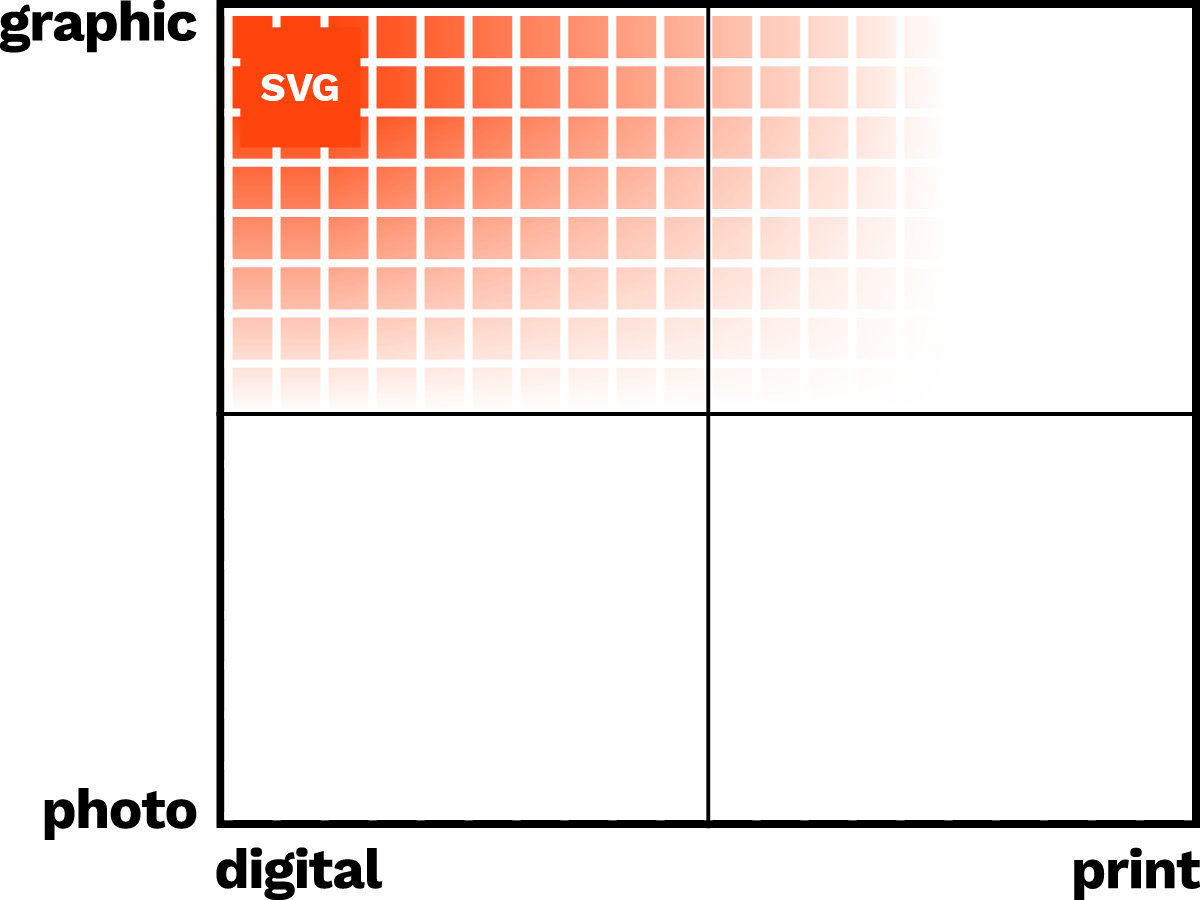
SVG—Scalable Vector Graphics
SVG is the ideal file type to use vector graphics with digital devices. Designed for web use and supported by almost all contemporary browsers, this format proves excellent for displaying logos and other complex shapes online. Though it is possible, it is not recommended for print, and editability will be greatly reduced from AI or EPS.
Best for: displaying logos on the web
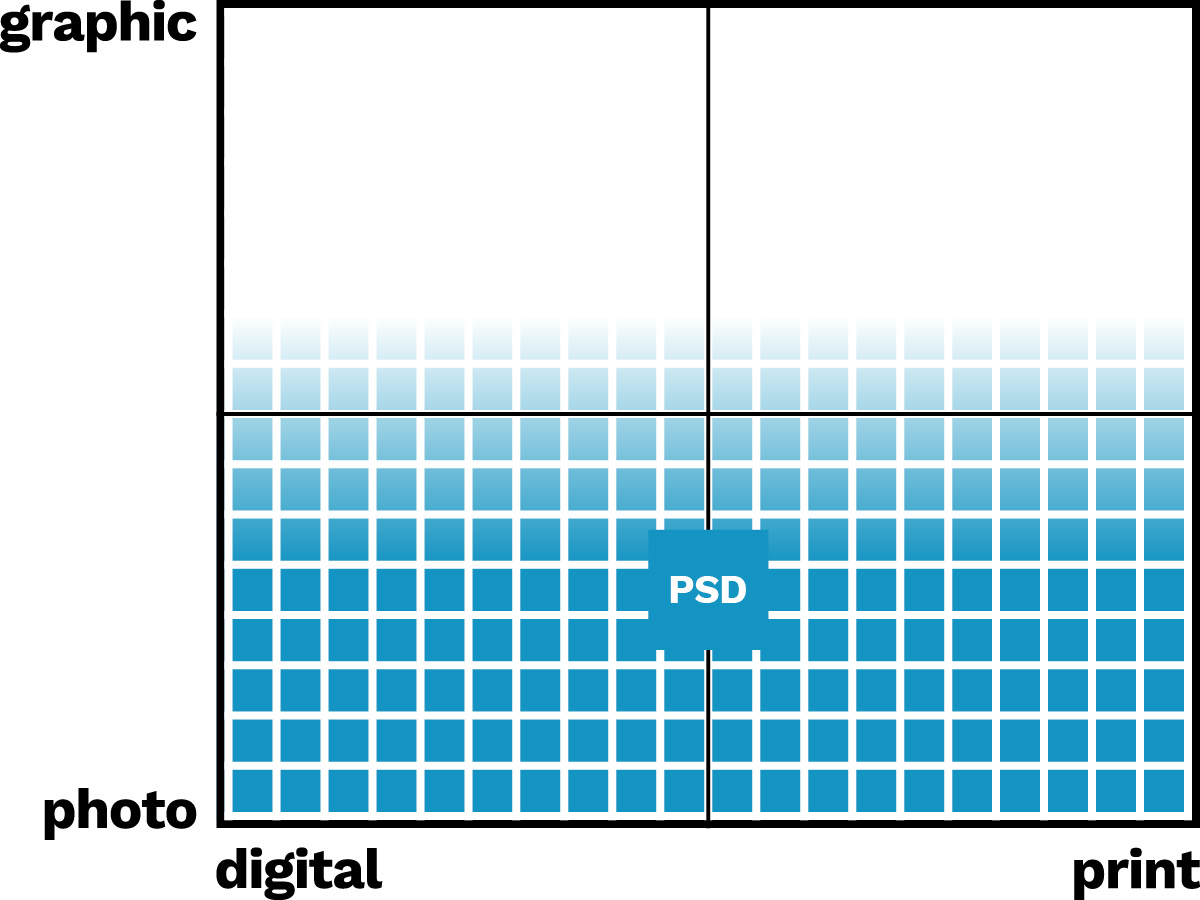
PSD—Adobe Photoshop Document
Adobe Photoshop is the premier tool for working with raster images. Designers use Photoshop for everything from retouching photos to website or UI/UX design. PSD files are likely the source file type for any final raster image you have. They support many layers and tend to have a large file size, and they will also support embedded vector information for shapes and paths (though the final rendering of those shapes will be in pixels). PSD files require Adobe Photoshop to open, so make sure that you have alternate file types (e.g. JPG, PNG, TIFF) for use on the web or in your documents.
Best for: source files for photo editing
Working with image file types can be confusing. It is important to have a basic understanding of file types so you are able to communicate what you are trying to accomplish, which file type is best to use and what file type to specify.





